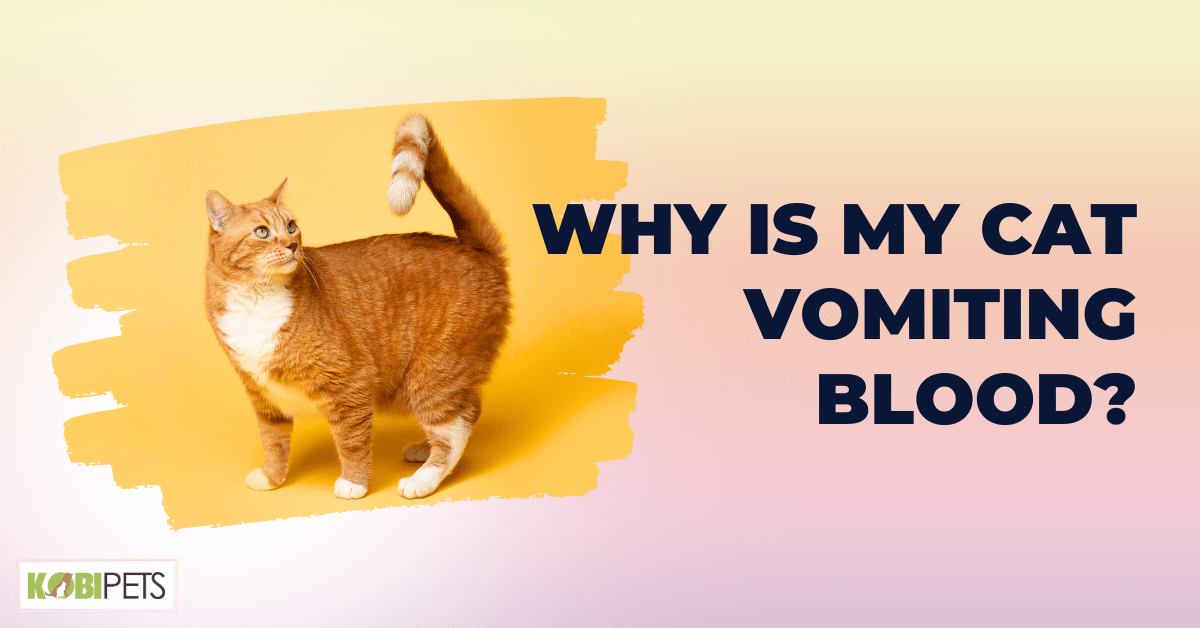
Vomiting blood (hematemesis) in cats can be caused by various underlying issues, ranging from ingestion of foreign objects or toxins to more severe conditions like ulcers or cancer. Immediate veterinary attention is essential to pinpoint the cause and initiate appropriate treatment. Always prioritize your pet’s health and never overlook alarming symptoms.
Discovering your beloved cat has vomited blood is a deeply distressing sight for any pet owner. As unsettling as it may be, it’s vital to understand the possible causes and to promptly seek veterinary care. Let’s delve into what might be behind this alarming symptom and the crucial next steps to take.
Overview of Hematemesis in Cats
Hematemesis, a medical term that might sound foreign to many, refers to the act of vomiting blood. In cats, this manifestation can range from spotting a few streaks of bright red blood to observing a more coffee-ground appearance, indicating partially digested blood.
The presence of blood in a cat’s vomit is not to be taken lightly. It’s a symptom that underscores a range of potential internal issues, some more severe than others, and invariably signals that something is amiss with your feline friend’s health.
Understanding the gravity of this symptom is essential, as it emphasizes the urgent need for professional assessment and care.
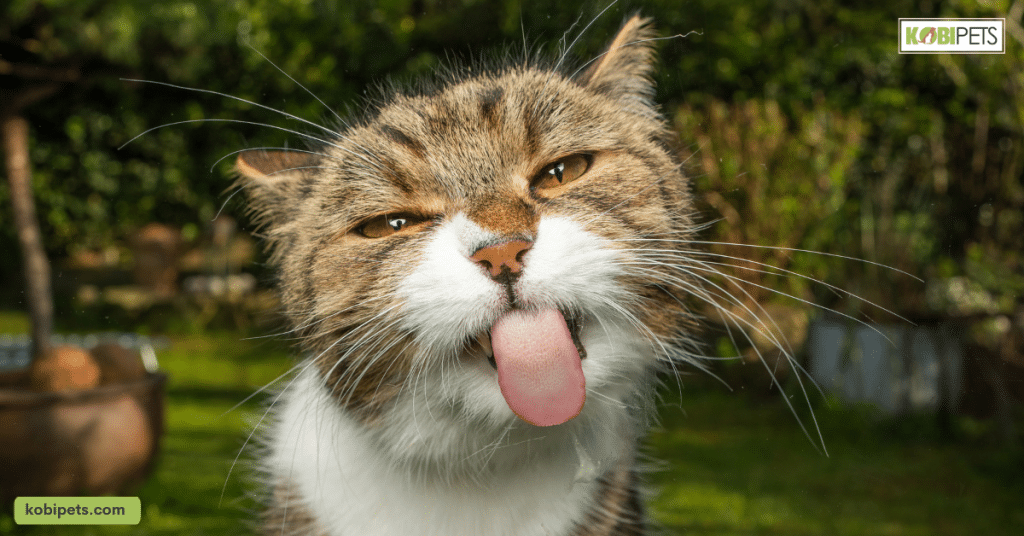
Common Causes of Blood in Cat’s Vomit
One of the most alarming discoveries a cat owner can make is finding blood in their pet’s vomit. While distressing, understanding the root causes can provide some clarity and guide appropriate actions. Here’s a breakdown of common culprits:
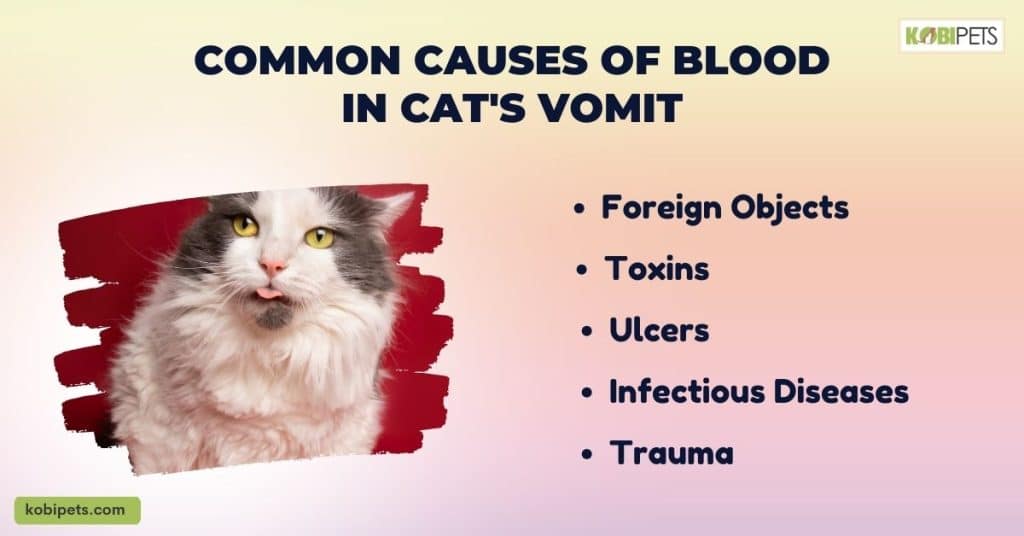
Common Causes of Blood in Cat’s Vomit
- Foreign Objects: Cats are curious creatures, often leading them to ingest non-food items. This can cause irritation or even obstruction in their gastrointestinal tract.
- Toxins: Our homes are filled with potential hazards for our feline friends. Some plants, foods, and household chemicals can be toxic for cats, leading to internal bleeding when ingested.
- Ulcers: Just like in humans, ulcers can develop in a cat’s stomach or upper intestinal tract. These painful sores can bleed, resulting in the presence of blood in vomit.
- Infectious Diseases: Conditions such as feline leukemia virus or feline infectious peritonitis can be detrimental to a cat’s health and may manifest through symptoms like vomiting blood.
- Trauma: Cats can get into accidents, indoors or out. Injuries, if severe, can lead to internal bleeding which might then be regurgitated.
Identifying the cause behind your cat’s alarming symptoms is the first step towards addressing the issue. Regardless of the cause, it’s imperative to consult with a veterinarian to ensure your cat receives the best care possible.
Less Common But Severe Causes
While many cat owners are aware of the more common causes of blood in cat vomit, there are lesser-known but severe factors to consider. Recognizing these can be crucial for early detection and appropriate care.
1. Cancer
As our feline companions age, they become more susceptible to certain health challenges, one of which is cancer. Tumors, whether benign or malignant, can develop in various parts of the body.
When these tumors affect the gastrointestinal tract or related areas, they may lead to blood appearing in the vomit, making it crucial for regular health checks, especially in senior cats.
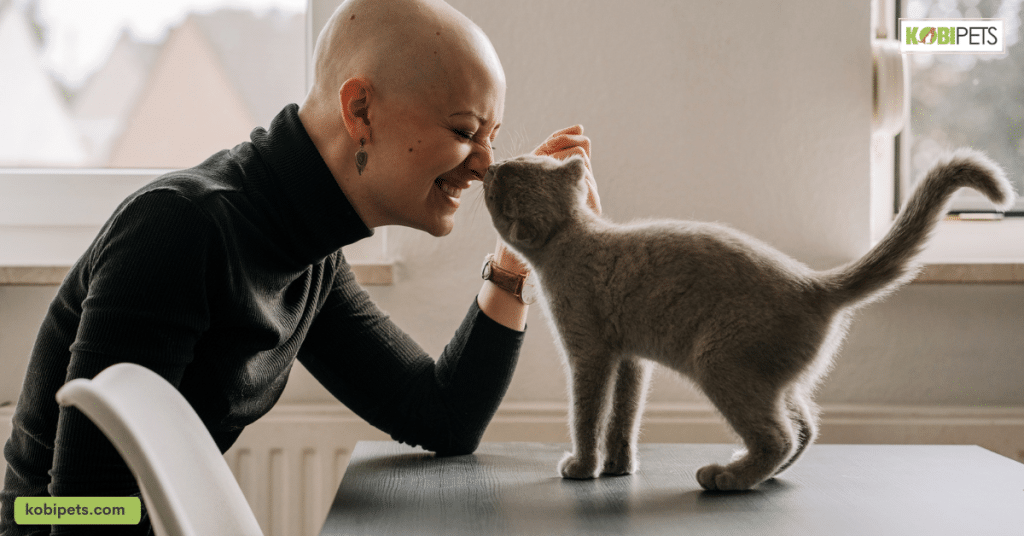
2. Blood Disorders
Just as humans can suffer from blood clotting disorders, so can cats. Conditions like thrombocytopenia, where there’s a decreased number of platelets, or coagulopathies, disorders that affect the blood’s ability to clot, can result in bleeding.
This internal bleeding can then manifest as blood in vomit, among other symptoms, underlining the need for comprehensive blood tests when such symptoms arise.
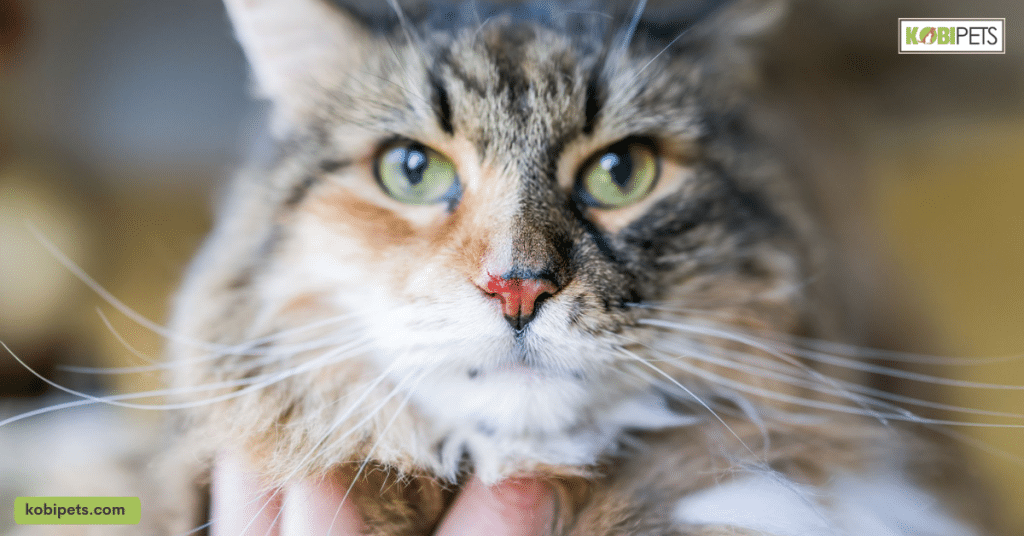
3. Systemic Diseases
Systemic diseases, which affect the body as a whole or multiple organs, can have a myriad of symptoms. Conditions like kidney disease or liver dysfunction might not directly cause hematemesis.
However, their secondary effects, such as toxins building up in the body or decreased clotting factors, could lead to the appearance of blood in vomit.
While these causes might be less common, their potential severity underscores the importance of regular veterinary check-ups and prompt attention to unusual symptoms. Your cat’s well-being often rests on vigilance and early intervention.
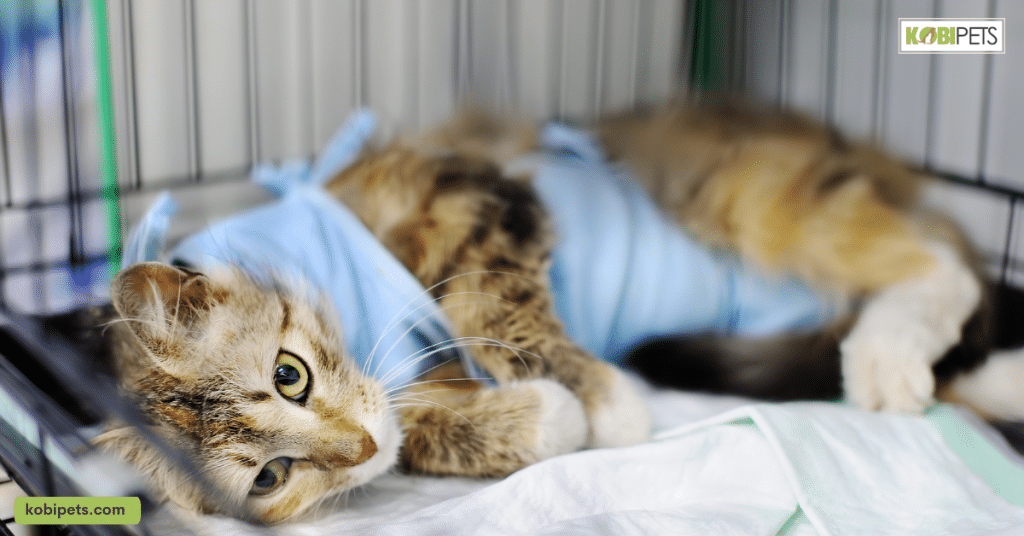
Diagnosing the Cause
Upon spotting blood in your cat’s vomit, a prompt veterinary visit is essential. This examination ensures a quick assessment and the potential for timely intervention. A combination of a detailed history and a physical check will shed light on underlying issues.
Veterinarians utilize various tests to pinpoint the root cause. Blood tests gauge organ function and potential infections. X-rays identify internal abnormalities, while endoscopies offer a closer look at the gastrointestinal tract, guiding the subsequent treatment.
Seeing blood in your cat’s vomit is distressing, but immediate action and understanding the diagnostic steps can be crucial for your feline’s well-being. Always trust in your vet’s expertise during such times.
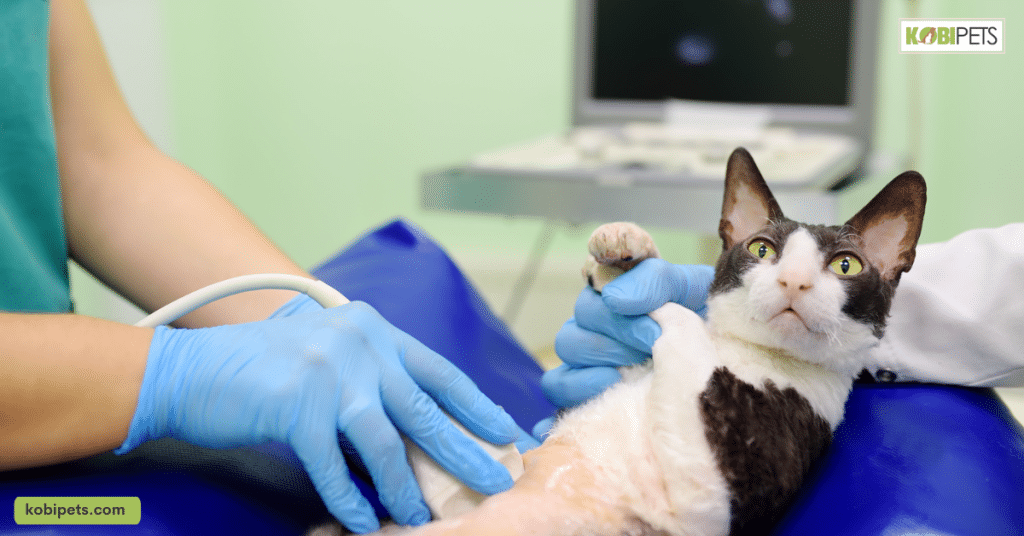
Treatment Options and Prognosis
Understanding the potential causes of blood in your cat’s vomit is crucial, but equally important is knowing the available treatment options and the possible road to recovery. Here, we’ll delve into what you can do immediately, the specific treatments your cat may require, and what to expect during the recovery process.
| Treatment Aspect | Description |
|---|---|
| Immediate Care | While awaiting professional care, under guidance, you can provide comfort measures, such as keeping your cat hydrated and monitoring their condition closely. |
| Specific Treatments | Treatment will depend on the diagnosis. This could range from surgery to remove obstructions, antibiotics for infections, or dietary changes for managing ulcers. |
| Recovery and Prognosis | Understand the expected recovery timeline, potential complications, and the overall prognosis based on the underlying cause of hematemesis. |
As a cat owner, being aware of the available treatment options and understanding what lies ahead in terms of recovery and prognosis is vital. With the right care and professional guidance, you can help your feline companion get back to their healthy, happy self.
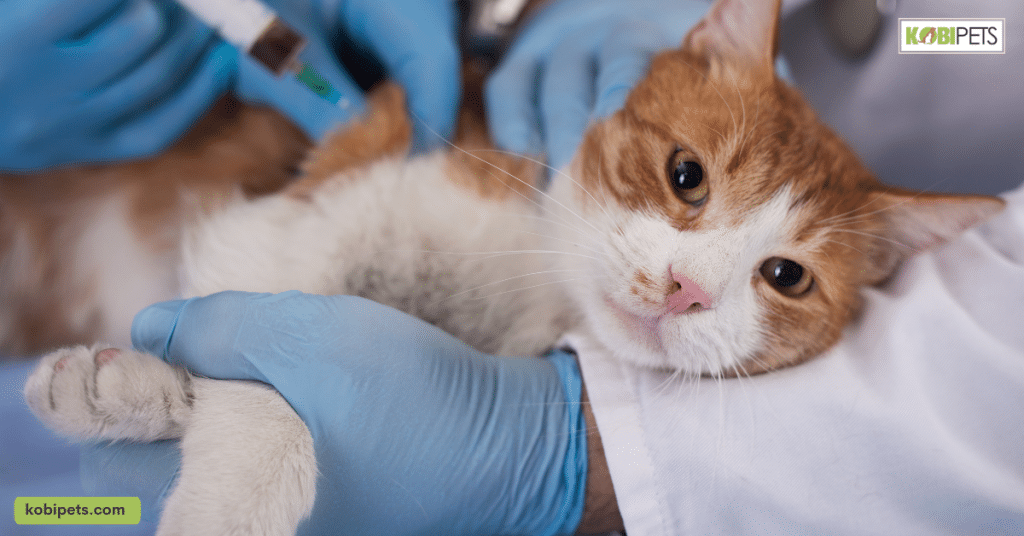
Preventative Measures and Tips for Cat Owners
In this guide, we’ll explore three key pillars of preventative care for your cat: home safety, regular check-ups, and proper diet and nutrition. By incorporating these practices into your pet care routine, you can help your cat lead a healthier and more fulfilling life.
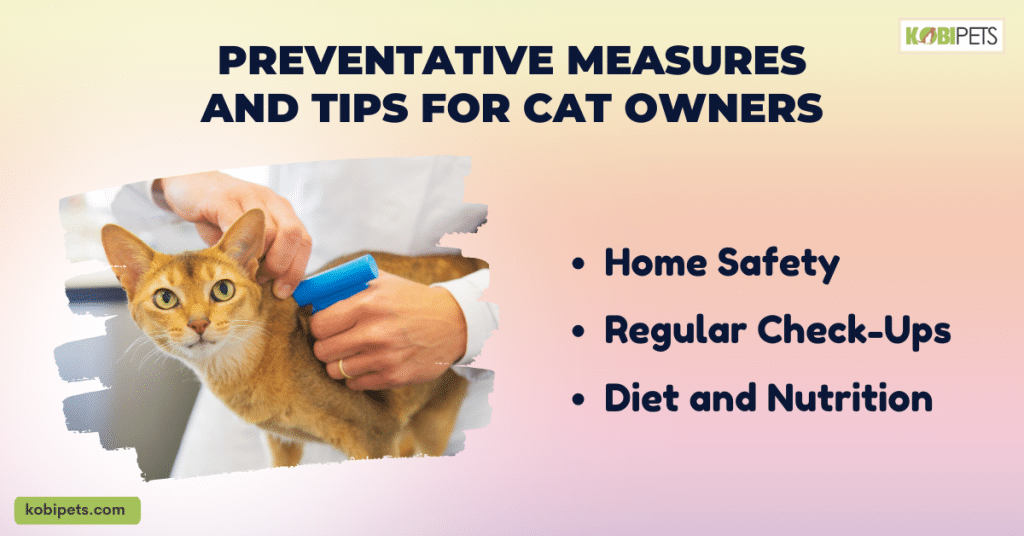
Preventative Measures and Tips for Cat Owners
- Home Safety: Safeguarding your home is crucial for your cat’s well-being. Remove small objects like toys, strings, or cords from their reach to prevent ingestion-related issues. Awareness of common household toxins, such as certain plants, foods, and chemicals, is equally vital.
- Regular Check-Ups: Proactive healthcare is the foundation of your cat’s health. Schedule routine veterinary visits not only when your cat is sick but also as a preventive measure. Regular check-ups can detect underlying health issues early, often before they become serious, and ensure your cat receives necessary vaccinations to protect them from common illnesses.
- Diet and Nutrition: Your cat’s diet plays a significant role in their overall well-being. Providing high-quality, well-balanced cat food that meets their nutritional needs is essential. Pay attention to any dietary changes or reactions, as these could be indicators of underlying health problems.
Always prioritize your pet’s health by seeking prompt veterinary care when needed. With early intervention and proper treatment, you can help your felineitizing home safety, regular vet check-ups, and a proper diet not only enhance your cat’s physical health but also contribute to their overall happiness.
Conclusion
In wrapping up, responsible cat ownership means taking proactive steps to ensure your pet’s well-being. By focusing on home safety, regular veterinary check-ups, and maintaining a proper diet, you provide a secure, healthy, and fulfilling life for your feline friend. This commitment not only strengthens the bond you share but also guarantees a happier, healthier future for your beloved cat.






